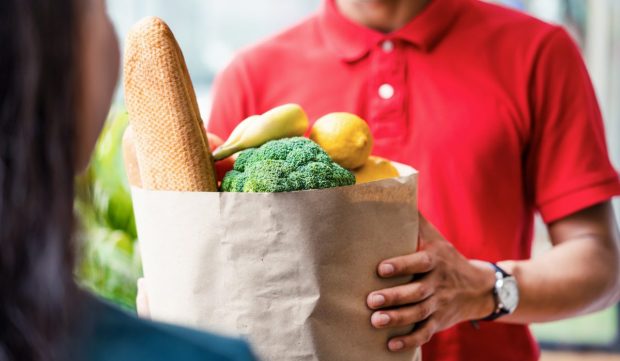
With pure-play eCommerce food sellers gaining share from brick-and-mortar grocers, and with many grocers struggling to manage the costs of in-house fulfillment, 2024 may be the year that third-party aggregators take over the grocery industry.
Many grocers are struggling with the economics of in-house delivery. Last year, for instance, Ahold Delhaize’s U.S. arm sold off its FreshDirect grocery delivery business and shut down some supermarkets’ fulfillment centers, pivoting to third-party delivery while still completing pickup orders in-house. Even grocery giant Kroger, the nation’s largest pure-play grocery chain, slowed the rollout of its own eCommerce fulfillment centers.
Meanwhile, more third-party players have been adding grocers to their platforms to better compete with Instacart following the grocery aggregator going public in September. In the past several months, Uber Eats has added new grocery features and onboarded more retailers, and DoorDash has brought more grocers onto its platform.
“If you already have a large consumer base and a large driver base that is interacting with you many times a week, you just have more shots on goal to be able to launch into these adjacent categories,” DoorDash CEO Tony Xu said in an interview with the Financial Times (FT) published Monday (Jan. 1).
For grocers that do not have the resources to build out their own eGrocery infrastructures, aggregators present a path to meet digital demand. These third-party players may come with strings attached, charging often steep commissions and owning the customer transaction, but given the high cost of in-house fulfillment, many merchants do not have much choice.
In an interview with PYMNTS in the fall, Tamara Pattison, senior vice president and chief digital officer at The Save Mart Companies, noted that the merchant’s decision to partner with Uber Eats follows consumer demand trends.
“[We’re] looking at [our] footprint and understanding where there is some level of penetration [with] existing marketplaces,” Pattison said. “Making sure that our shoppers see us participating in those marketplaces is critical. We want to make sure that we’re not dictating to our shoppers how to engage with us, but that we are looking at their behavior and finding ways to ensure that we can meet them wherever they want us to be.”
The shift comes as digital players have been eating away at grocers’ share of consumers’ spending on food and everyday essentials, as suggested by findings from the PYMNTS Intelligence study “The Replenish Economy: A Household Supply Deep Dive.” The study, which drew from a survey of more than 2,000 U.S. consumers, looked at how retail subscriptions affect consumer shopping habits.
Take, for instance, meal kits. The study found that 47% of HelloFresh subscribers have reduced their visits to brick-and-mortar stores, higher than the 42% that said the same across retail subscriptions. Meanwhile, Amazon is gaining share, with 48% of Subscribe & Save participants having done so.
Many consumers are engaging with digital grocery options. According to the PYMNTS Intelligence survey “Consumer Interest in an Everyday App,” which was based on responses from more than 2,200 U.S. consumers, 61% of those who had shopped for groceries in the previous month did so via connected devices at least some of the time.
Still, for now, consumers do the bulk of their grocery shopping in stores. The PYMNTS Intelligence study “Tracking the Digital Payments Takeover: Catching the Coming eCommerce Wave,” which drew from a survey of nearly 2,700 U.S. consumers, revealed that 87% of grocery transactions are carried out in stores and 12% occur online.